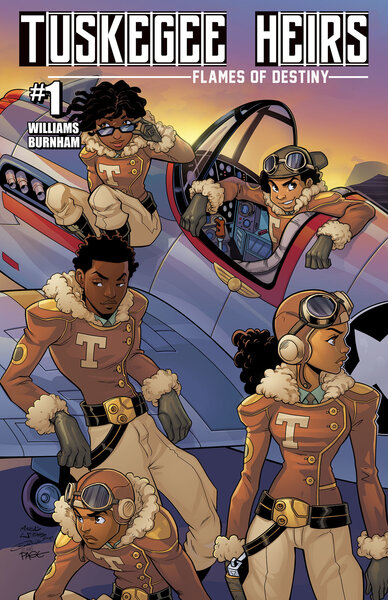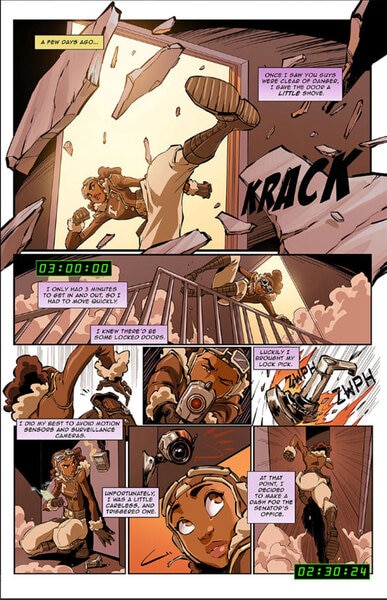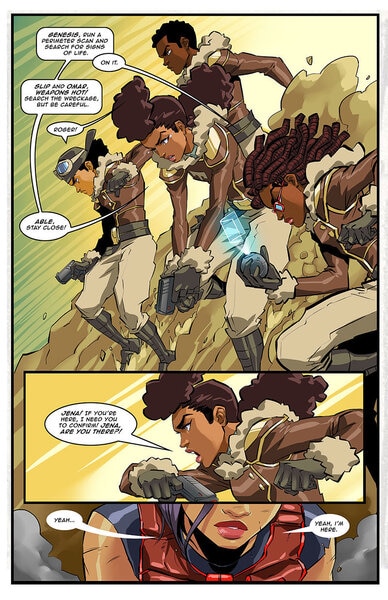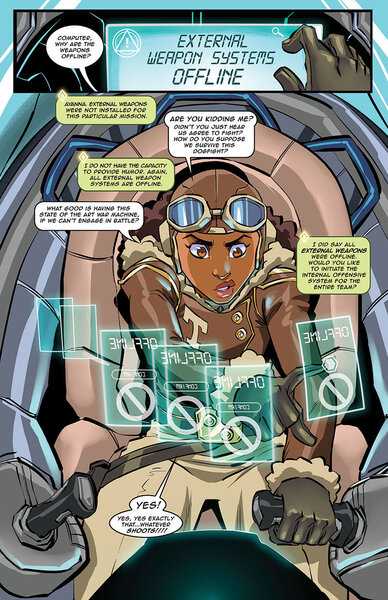Create a free profile to get unlimited access to exclusive videos, sweepstakes, and more!
Indie Comics Spotlight: Tuskegee Heirs creators mix history with fantasy to create hit kids comic
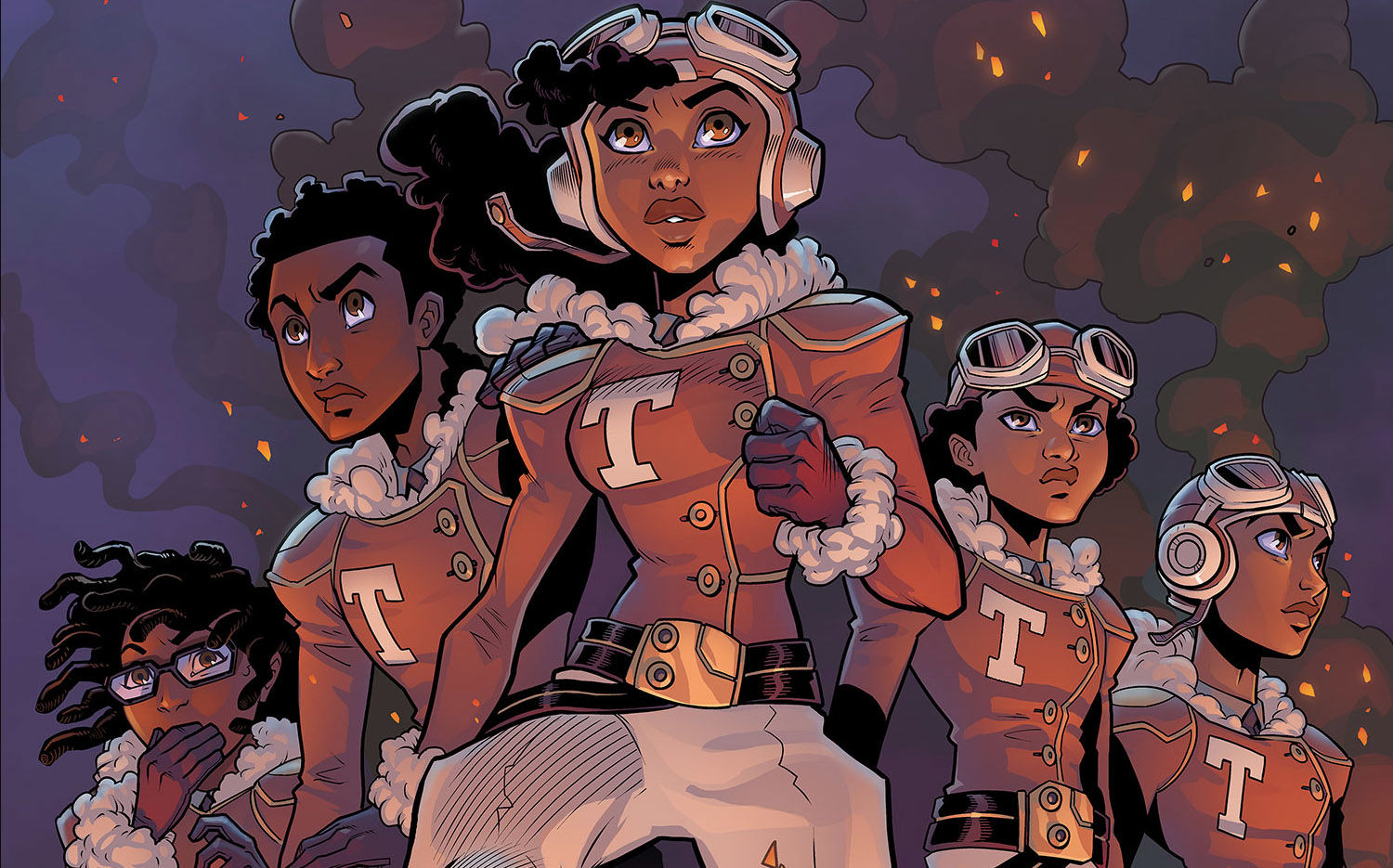
In 2016, artist Marcus Williams and writer Greg Burnham came out of nowhere with a Kickstarter for a comic book concept that blew everyone away. They took the real-life story of the famous Tuskegee Airmen, the first black military aviators in the U.S. Army Air Corps (the precursor to the U.S. Air Force) and updated it with kids and superpowered mechs to create Tuskegee Heirs.
The story is set 80 years in the future and follows five young pilots who are being trained by a fictional descendant of one of the real-life Tuskegee Airmen. They end up being the last line of defense against an advanced robot army and, in turn, getting an upgrade to their jets, giving them the ability to transform into giant robots.
Needless to say, Williams and Burnham's concept was a hit, and they made their initial ask of $10,000 in the first three hours of the Kickstarter's launch. Today, they are three issues in and dropping the first full volume of Tuskegee Heirs very soon.
SYFY WIRE caught up with the creative team at C2E2 to ask what it was like creating their first indie comic on their own and what they would change if they had to do it all over again.
Growing up, what was your favorite comic book?
Williams: I didn't have a favorite growing up until someone gave me a Wolverine comic. That was my very first, and it kind of blew my mind. I was drawing Street Fighter and video game characters like Sonic, and then someone shows me this guy with claws popping out of his hands, and he couldn't get killed because he had healing factor, and it blew my mind! It was drawn by Jim Lee then. So that was my first comic art explosion moment. Then the cartoon came out, and maybe a few months after I got that first book. And now I hate the movies because they ruined what I saw as a child.
Burnham: Spider-Man. I remember my first memories were living in England as a military kid, and the main thing I remember is I've always had this Spider-Man toy. He had Velcro on his hands and feet, he went with me everywhere. So I was just always in love with Spider-Man, but I realized as I get older, it wasn't just because he was cool but it was because he was young, he was into the arts, he had to have a job, like all these different things. He was realistic. I'm not trying to diss DC, but a lot of their characters were real linear, like just a good person with powers.
So you probably saw Spider-Man: Into the Spider-Verse a few times.
Burnham: I bought out a theater for it. Not a whole theater. More like half a theater. Yeah. I've seen it many, many times.
So when did you decide creating comics is something you could do for a living?
Williams: I was always drawing on things. I was failing classes because of it. My teachers praised me and also scolded me at the same time. I had no idea I could make a living [at it].
For a long time I wanted to be an animator, until I was old enough to see how much work animation is, and it was then that I decided I didn't want to be an animator anymore. So comics was it for me.
Burnham: As a kid, I would create my own comics. I was terrible at drawing, but I liked writing. Many years later, after I had kids and moved to Atlanta, I had this idea to do this comic book. I knew I could write, but I couldn't find anybody [to draw it] until one of my friends introduced me to Williams. And Williams was able to draw the characters the way I wanted them to look and better.
What was your first published comic?
Williams: My first published comic was Hero Cats of Stellar City, and that was with Action Lab Comics. It was exactly what it sounds like, a bunch of cats who were heroes. The actual creator was like, "Hey, man, you know how to draw cats?" And I was like, "I have no idea. Let's give it a shot." He was a comic shop owner who had daughters who loved cats, and he wanted something that he thought would be really easy to market. He was so right, cats are super easy to market, and the fans were some of the most passionate people on the planet.
After that, did you decide to try self-publishing or did you continue to draw other work for other people?
Williams: No, it was directly after. I figured I understood the business enough. I did actually ask a million questions when I worked with Action Lab, I paid close attention to the business side of comics. So that helped me to understand how they make their money as a publisher.
From that, it literally opened up a lot of the conversations I had between my business partner/writer Burnham and myself. Everything up to that point, we don't know what we're doing. So it helped a lot once I learned the business.
Why the Tuskegee Airmen? Why Tuskegee Heirs? Where did the concept come from?
Burnham: During a children's book signing, an older gentleman put the seed in our ear. He was kind of mean in hindsight, actually. He walked up to our table [at a convention], looked at our stuff and said, "This is nice, but you guys should have stuff about pilots and planes. These kids don't know anything about history …"
Williams told me later that he was thinking about drawing some young Tuskegee Airmen, and then I had the idea to put it in the future. Then he said we should add robots and our heads exploded and it just started coming together.
It has a very manga/anime feel. Were you a fan of manga growing up in anime?
Burnham: I would say I wasn't as much as a fan as Williams is.
Williams: Any large robot that you can think of. It goes all the way back to Voltron, Transformers. Gundam, of course, when I was younger. Oh, and Macross. When the internet came out I finally understood how many different anime there were that featured giant robots and team pilots. I knew I wanted to do something like this one day, even though I hate drawing machines. So that's a conundrum.
Why do you hate drawing machines?
Williams: I don't like straight lines. I hate them. I know it's stupid, but I love human characters because they're curved, and animals are too.
So when you did your Kickstarter, did you have any idea that it was going to be as big as it was?
Williams: No. We set our goals for $10K, and we were kind of worried about just meeting that, because we felt that might be a little much for our first time out. But eight hours after hitting the button on Kickstarter, we got $10K. From there, we screamed to ourselves and jumped around a little bit, and then 29 days later it was up to $74K.
And then the first volume dropped how long after that?
Williams: I would say it was at least a good six to eight months after, because we were literally working on the book and building the brand at the same time. So it worked out really well, but it was a lot of work between just two people.
And now you have three issues in total, right?
Williams: Yes. Issue 3 just came out not too many months ago. Now we're going to have our first volume, our first graphic novel coming out in the next few weeks. So we can get that in the library in schools, which is great.
A lot of libraries and schools can't take single issues because they'll get torn to shreds by children. So finally we'll have the first volume, Issues 1, 2, and 3 sandwiched together for them.
Now that you've been through this whole process of successfully creating your first comic, what's your advice to somebody who wants to do the same thing?
Williams: Really learn the business, so you'll understand how you're going to make your money back. Not just the publishing, it's printing, travel, hotels, all of these things. How you are going to reach your market, what shows to go to, what shows not to go to. Talk to people that are doing what you're trying to do and literally make those smart business decisions. It's no different from any other business. If you open a restaurant and you don't know how to reach your market, you can be the best chef in the world, you're still going to have a closed restaurant if no one comes in to eat.
In terms of Kickstarter, the biggest mistake we made was not finishing the book first. That's the best way to do it, once the Kickstarter is done, you just mail it out. So that was a really hard lesson. You have to grow and change as the industry grows and new methods of selling your products come out. Be flexible and keep learning.
